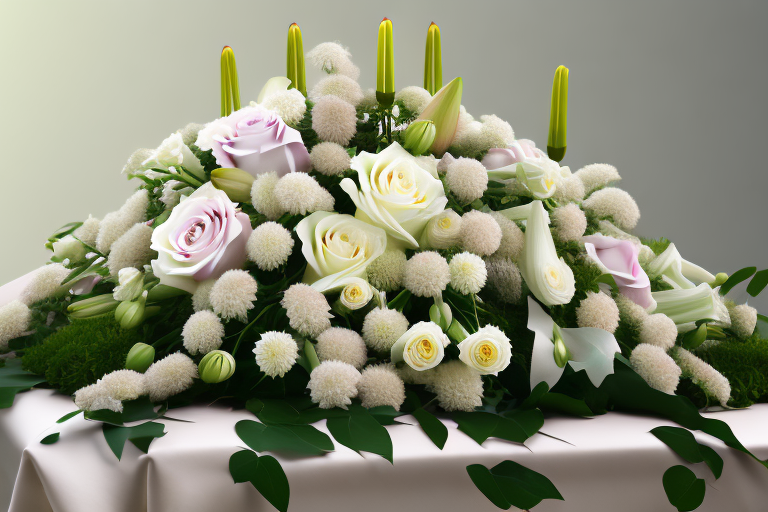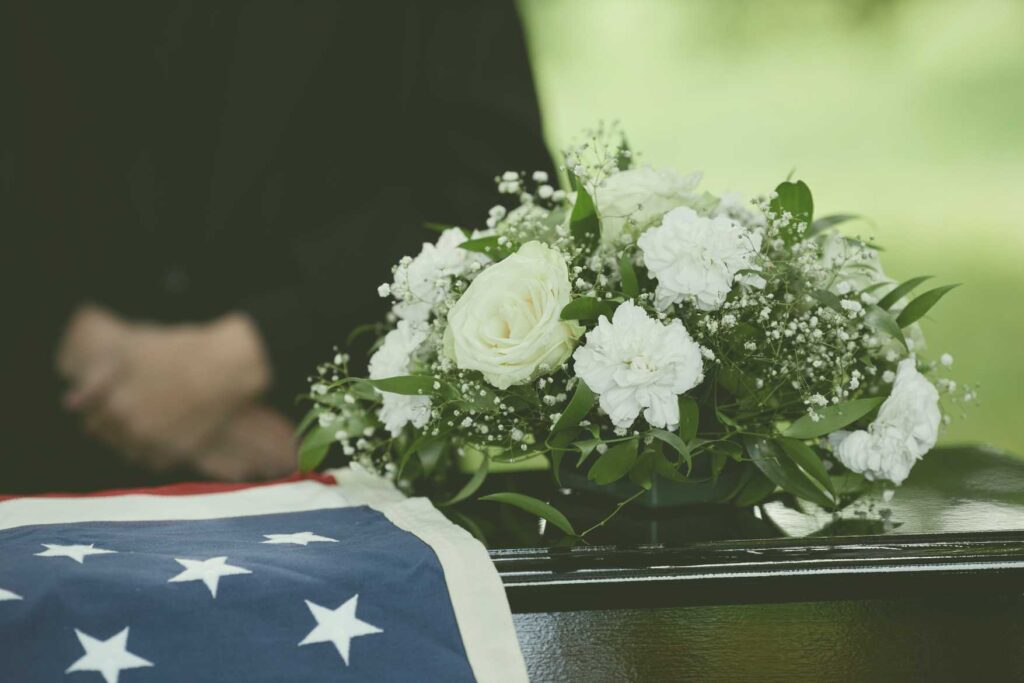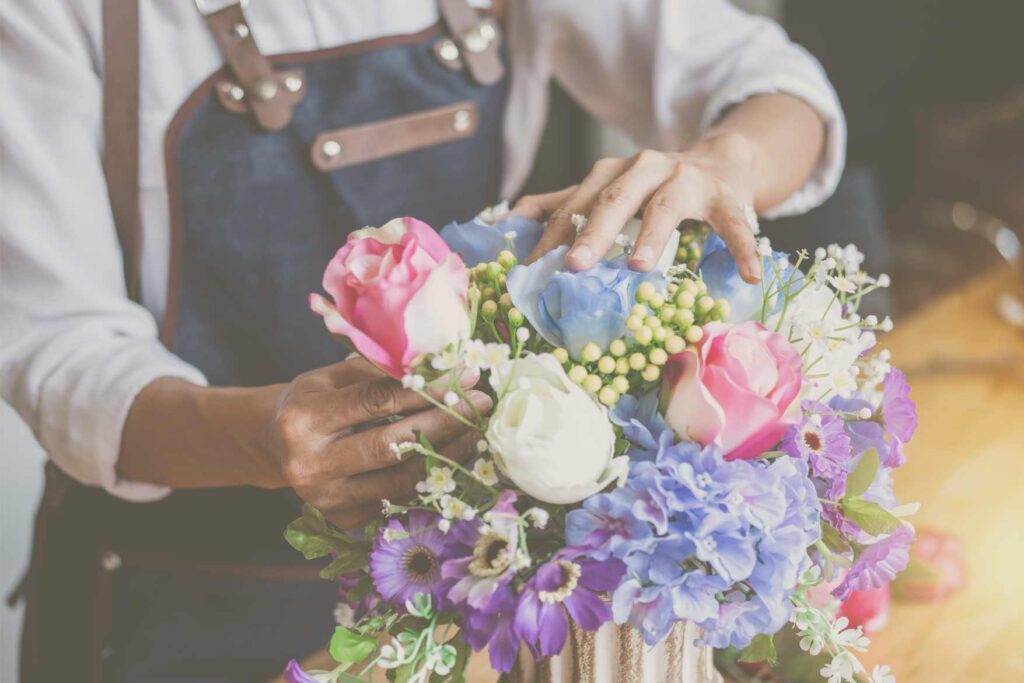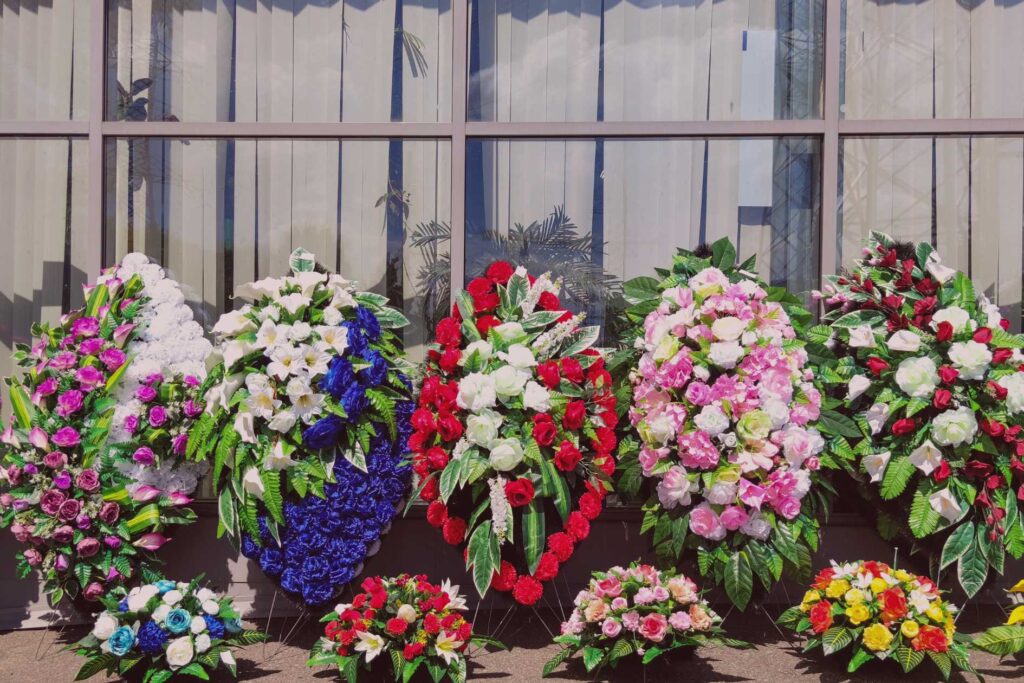
Losing a loved one is a difficult and emotional experience. In times of grief, expressing condolences and paying respects is important for both comfort and closure. One common way to show sympathy and respect is by sending funeral flowers. Funeral bouquets have a long-standing tradition and play a significant role in funeral rituals around the world. Understanding the importance of funeral flowers and the proper etiquette when selecting them is crucial for honoring the deceased and offering support to grieving families.
Table of Contents
ToggleUnderstanding the Importance of Funeral Flowers
Funeral flowers are more than just decorative arrangements. They carry symbolic meanings that convey messages of love, sympathy, and support to the deceased’s family and friends. These floral tributes serve as a tangible expression of one’s condolences and are considered an essential part of the funeral ceremony.
There are various reasons why funeral flowers hold such significance. First, flowers represent the fragility of life and the cycle of nature. They serve as a reminder that life is temporary and that we should cherish our time with loved ones while they are still present. Second, the beauty and fragrance of flowers bring comfort and solace to those grieving, creating a peaceful and serene environment. Lastly, funeral flowers symbolize the respect and honor we have for the departed.
When selecting funeral flowers, it is important to consider the symbolism behind each type. Each flower carries its own meaning, allowing you to choose the most appropriate arrangement to convey your emotions. For instance, lilies are often associated with purity and innocence, making them a common choice for honoring the deceased. Roses, on the other hand, symbolize love and grief, making them a heartfelt option for expressing condolences.
Other popular funeral flowers include chrysanthemums, which symbolize death and are commonly used in Asian funeral traditions, and baby’s breath, which represents everlasting love and purity. Understanding these symbolic meanings can help you choose the most appropriate flowers to convey your emotions.
In a city known for its diverse cultural heritage, selecting a funeral wreath Sydney can involve incorporating both traditional and contemporary floral elements to honor the deceased fittingly. A well-crafted funeral wreath Sydney not only embodies the personal and cultural significance of the chosen flowers but also provides a meaningful tribute that resonates with the bereaved family and friends, offering them comfort during their time of loss.

The Symbolism Behind Funeral Flowers
Each type of funeral flower carries its own symbolism. For instance, lilies are often associated with purity and innocence, making them a common choice for honoring the deceased. Roses, on the other hand, symbolize love and grief, making them a heartfelt option for expressing condolences.
Other popular funeral flowers include chrysanthemums, which symbolize death and are commonly used in Asian funeral traditions, and baby’s breath, which represents everlasting love and purity. Understanding these symbolic meanings can help you choose the most appropriate flowers to convey your emotions. At this place you can also read about one more thing the power of a Professional buyer agent by visiting https://youcantbeatthisrentals.com/seamless-homebuying-in-sydney-the-power-of-a-professional-buyers-agent/
Furthermore, funeral flowers can also be arranged in different ways to convey specific messages. For example, a wreath symbolizes eternity and continuity, while a casket spray is a grand display of love and respect. By considering the symbolism behind both the flowers and the arrangement style, you can create a meaningful tribute that truly reflects your sentiments.
Cultural Significance of Funeral Bouquets
Funeral flower traditions vary across different cultures and religions. In Western cultures, it is customary to send flowers directly to the funeral home or the family’s residence. These flowers are typically arranged in bouquets, wreaths, or casket sprays.
In Asian cultures, white and yellow chrysanthemums are often used in funeral flower arrangements. White chrysanthemums symbolize grief and are commonly placed at gravesites or on ancestral altars. Yellow chrysanthemums, however, are considered more appropriate for joyful occasions and are used sparingly.
It is essential to respect and follow the specific funeral flower traditions of the culture or religion in which the funeral is being held. This shows sensitivity and understanding towards the grieving family.
By understanding the importance of funeral flowers and the symbolism they carry, you can choose the most meaningful arrangements to honor the deceased and provide comfort to their loved ones. Whether it’s a simple bouquet or an elaborate display, funeral flowers serve as a powerful expression of support during a difficult time.
Funeral Flower Traditions Around the World
Funeral flower traditions differ not only between cultures but also within specific regions or countries. Understanding these traditions helps ensure our floral tributes align with the customs and beliefs of the grieving community.
Western Funeral Flower Traditions
In Western traditions, funeral flowers are typically sent directly to the funeral or memorial service. Common arrangements include casket sprays, wreaths, and standing sprays. These floral tributes provide a sense of beauty and comfort during the mourning process. White flowers, such as lilies and roses, are often chosen for their elegance and purity, while pastel-colored bouquets symbolize sympathy and support.
It is customary to include a sympathy card or a handwritten note expressing heartfelt condolences. This allows the family to identify the sender and acknowledge their support during their time of grief.
Asian Funeral Flower Traditions
In many Asian cultures, including China, Japan, and Korea, funeral flower arrangements often feature white chrysanthemums. These flowers symbolize death and are believed to bring peace to the departed soul. Funeral flowers are typically placed in front of the casket or memorial altar and are accompanied by burning incense and prayer.
In some Asian cultures, such as Vietnam, paper flowers are also used during funerals. These intricately crafted flowers are made from colored paper and are believed to guide the deceased’s spirit into the afterlife.
African Funeral Flower Traditions
In various African cultures, funeral flower traditions hold significant meaning and symbolism. For instance, in Egypt, flowers such as lotus and jasmine are commonly used during funerals. The lotus flower represents rebirth and the journey to the afterlife, while jasmine symbolizes purity and spirituality.
In South Africa, funeral flower arrangements often incorporate indigenous flowers like proteas and strelitzias. These flowers not only add a touch of natural beauty but also represent strength, resilience, and the connection to the land.
South American Funeral Flower Traditions
In South American countries like Mexico, funeral flower traditions are deeply rooted in cultural beliefs and practices. Marigolds, known as “cempasúchil” or “flower of the dead,” are commonly used during Day of the Dead celebrations. These vibrant orange flowers are believed to attract the souls of the deceased, guiding them back to their loved ones.
In Brazil, funeral flower arrangements often include white lilies and roses, symbolizing purity and love. Additionally, orchids are also commonly used as they represent eternal love and beauty.

By understanding the diverse funeral flower traditions around the world, we can ensure that our floral tributes not only convey our condolences but also respect and honor the customs and beliefs of the grieving community.
Etiquette for Choosing Funeral Flowers
When selecting funeral flowers, it is essential to consider both practical and emotional factors. The goal is to choose flowers that will bring comfort to the grieving family and honor the memory of their loved one.
Factors to Consider When Choosing Funeral Flowers
First and foremost, consider the family’s religious or cultural customs regarding funeral flowers. Certain religions may have specific preferences or restrictions regarding the type of flowers used for funerals. It is best to consult with the family or a religious leader to ensure that your floral tribute aligns with their traditions.
Additionally, take into account the personality and preferences of the deceased. If the person had a favorite flower or color, incorporating these elements into the arrangement can make it more personal and meaningful. Consider whether the family has expressed any specific wishes regarding flowers, whether through a funeral announcement or obituary.
Common Mistakes to Avoid
While selecting funeral flowers, there are a few common mistakes that should be avoided. First, avoid choosing overly extravagant or flashy arrangements that may overshadow the significance of the event. Funeral flowers should be elegant, respectful, and appropriate for the somber atmosphere.
Second, refrain from sending allergy-inducing flowers to the service, as this can create discomfort for those attending. Flowers with strong scents, such as lilies or freesias, may trigger allergies or aggravate respiratory conditions. Opt for flowers that are less likely to cause allergic reactions.
Lastly, it is important to place your order well in advance to ensure timely delivery. Last-minute arrangements may cause unnecessary stress for the florist and the grieving family.
Different Types of Funeral Bouquets
Funeral bouquets come in many different forms, each with its own significance and purpose. Understanding the various types of funeral bouquets can help you choose the most appropriate arrangement for the occasion.
Single-Stemmed Flowers
A single-stemmed flower, such as a rose or a lily, is a simple yet powerful way to express condolences. These flowers can be presented individually or arranged in a small vase. Offering a single rose, for example, symbolizes a personal connection and deep admiration for the deceased.
Wreaths and Crosses
Wreaths and crosses are traditional funeral arrangements and are often used as a central tribute during the service. Wreaths, typically circular in shape, symbolize eternity and the eternal cycle of life. Crosses, on the other hand, hold religious significance and are commonly used in Christian funerals.
These larger floral arrangements are often displayed near the casket or at the entrance of the funeral venue. They can be crafted using a variety of flowers, such as roses, lilies, and carnations, depending on personal preferences and cultural customs.
Specialty Funeral Arrangements
Specialty funeral arrangements provide an opportunity to personalize the tribute to the deceased. These arrangements may include customized shapes or designs that represent the person’s hobbies, passions, or achievements. For example, a flower arrangement shaped like a musical note could honor a musician, or a sports-themed arrangement could pay homage to an avid sports fan.
These unique arrangements create a meaningful and memorable tribute that reflects the individual’s life and interests.
How to Personalize a Funeral Bouquet
Personalizing a funeral bouquet allows you to create a more intimate and thoughtful tribute. By choosing flowers based on their meanings and incorporating personal touches, you can ensure that your floral arrangement conveys the right message and provides comfort to the grieving family.
Choosing Flowers Based on Meaning
Many flowers have specific meanings attached to them. By selecting flowers based on their symbolism, you can add deeper layers of expression to your bouquet. For instance, red roses symbolize love and respect, while white lilies represent purity and innocence.

Consider the relationship you had with the deceased. Were they a close friend? A family member? Choosing flowers that reflect the nature of your relationship can make the tribute more personal.
Incorporating Personal Touches into the Bouquet
In addition to selecting meaningful flowers, consider adding personal touches to the arrangement. This could include items that were significant to the deceased, such as a favorite book, a handwritten note, or a small memento. These personal touches honor the individual’s life and create a more intimate connection between the flowers and the deceased.
Another way to personalize the bouquet is by selecting colors that hold personal meaning. If the deceased had a favorite color or if a particular color symbolizes something significant in their life, incorporating it into the arrangement can evoke cherished memories and emotions.
In conclusion, selecting the right funeral bouquet requires an understanding of the traditions, symbolism, and etiquette surrounding funeral flowers. By considering factors such as cultural customs, personal preferences, and the meaning behind different flowers, you can create a meaningful and respectful tribute that offers comfort and support to the grieving family.



